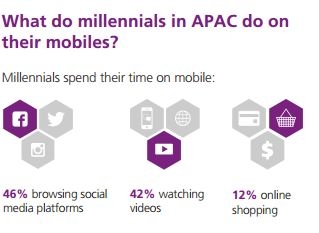
Phone frenzy: Singaporean millennials amongst most addicted to mobile in the world
They spend one whole day weekly on their phones.
Being one of the most influential technology hubs in Asia, it's no surprise that the city-state’s yuppies are more fixated on their smartphones compared to their global peers.
In fact, the average millennial in Singapore, aged 16-30, spends 3.4 hours a day on his mobile device, a leap higher than the global average of 3.2 hours a day, according to a survey of over 60,500 internet users worldwide by global consultancy firm TNS. That’s the equivalent of almost 24 hours every week,
TNS however warns that while are understandably focusing on how they can best reach these audiences via these new channels. concentrating on engaging millennials can be an expensive distraction. By focusing on these millennials, brands risk leaving behind other consumers who are shifting their patterns of behaviour at a slower pace, it says.
"For older consumers who are online, traditional media habits still hold strong with the 46-65 age group in Singapore spending 1.6 hours each day watching traditional TV, almost 25 minutes per day listening to the radio and the same reading newspapers," it explains
Yet older consumers are still a shifting target, and are using online platforms on a much more regular basis. TNS Survey found that those online aged 46-65 spend 2.3 hours a day on their phones, while 52% use Facebook on a daily basis, and they’re almost matching their traditional TV consumption, with an additional 1.5 hours of video watched online daily.
According to TNS, this dual pace in consumer adoption rates is creating a growing ‘digital divide’ that is most evident in Western markets, particularly the US, UK, Germany and France. In Asia Pacific, it notes that the divide is less wide, with the older generations using mobiles more than their Western counterparts. However the generational differences still mean that many businesses are struggling with how they can tailor content for different audiences.
Here's full illustration of the key findings in the study:
























 Advertise
Advertise






